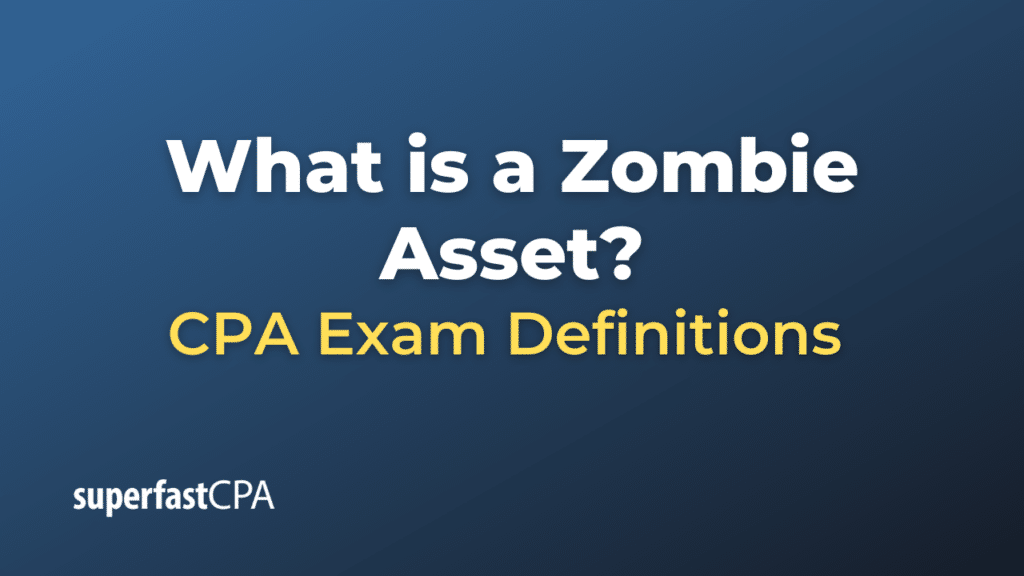Zombie Asset
The term “Zombie Asset” is often used informally to describe an asset that is non-performing or significantly underperforming and is not likely to generate any substantial value or income in the future. In other words, it’s an asset that continues to be on the books but doesn’t contribute meaningfully to a company’s operations, profitability, or asset base.
Zombie assets may result from various scenarios such as:
- Technological Obsolescence: An asset like machinery or software may become outdated but is still carried on the books.
- Economic Changes: Real estate or investments that have significantly lost value and are unlikely to recover could be considered zombie assets.
- Failed Projects: Initiatives that have been abandoned but still have associated capital costs can be considered zombie assets.
- Impaired Goodwill: Sometimes, goodwill from acquisitions that is unlikely to generate future economic benefits can also be considered a zombie asset.
Implications:
- Financial Reporting: Carrying zombie assets on the books can distort financial metrics and may not accurately reflect the company’s true financial health.
- Resource Drain: These assets might require ongoing maintenance or other costs, leading to an inefficient allocation of resources.
- Opportunity Cost: The capital tied up in zombie assets could have been used more effectively elsewhere.
Example of a Zombie Asset
Let’s take a look at a fictional example of a tech company, “SoftWave Inc.,” which developed a mobile application several years ago.
- SoftWave Inc. invested $500,000 five years ago to develop a mobile app aiming to revolutionize task management.
- The app initially gained traction but was eventually overshadowed by more innovative and user-friendly apps in the market.
- The company has not updated the app for the past two years, and it has lost virtually all of its user base.
- However, the asset’s value (cost of development, intellectual property, etc.) is still recorded on the company books at $200,000 after depreciation.
Identifying the Zombie Asset:
- The mobile app no longer generates any meaningful revenue.
- SoftWave Inc. does not intend to update or revitalize the app.
- The app is essentially dead weight, yet it still appears as an asset worth $200,000 on the balance sheet.
Implications:
- Financial Distortion: Keeping the zombie asset on the books at its current value distorts SoftWave Inc.’s financial metrics, making the company seem more valuable than it actually is.
- Resource Allocation: Although the app is not being updated, the company still incurs minor costs for server hosting and customer support, draining resources that could be better used elsewhere.
- Opportunity Cost: The value tied up in this asset could be better utilized, perhaps by investing in new projects or technologies.
Solution:
- SoftWave Inc. should realistically assess the value of this asset, which might involve writing it down to its actual worth (perhaps close to zero if it cannot be repurposed or sold).
- This write-down would reflect more accurately on the company’s financial statements, thereby providing stakeholders with more realistic information.
In this example, the mobile app has become a “zombie asset” for SoftWave Inc. It is no longer useful or profitable, and it could have negative implications for the company’s resource allocation and financial reporting. Writing off or divesting such assets can often be a good strategy for refocusing corporate resources effectively.













